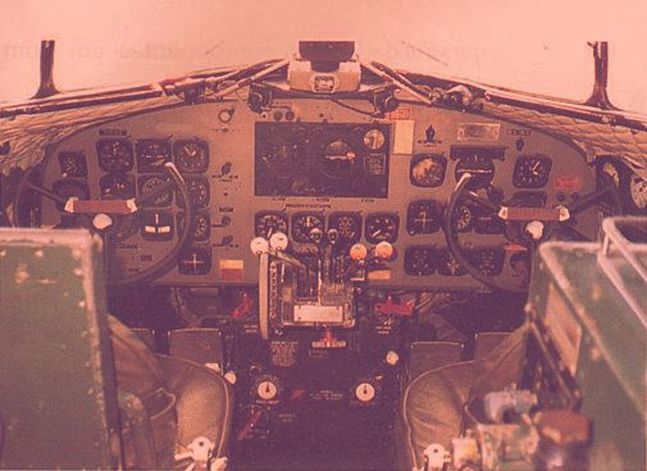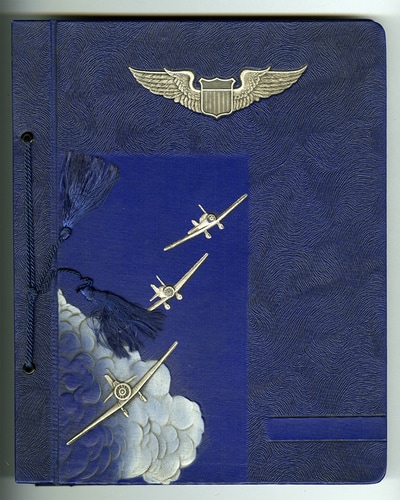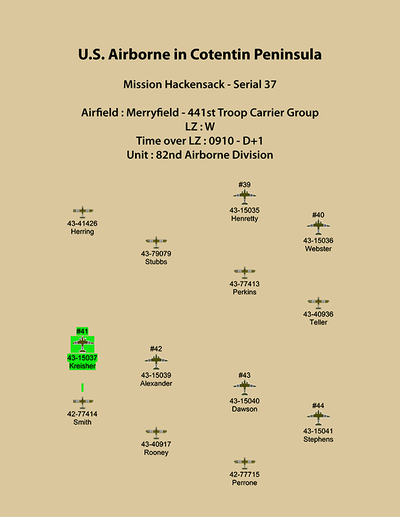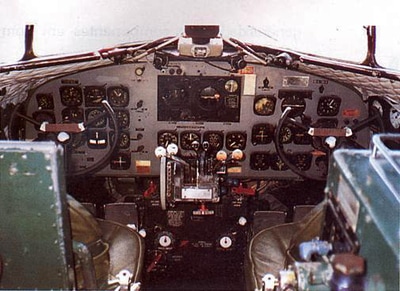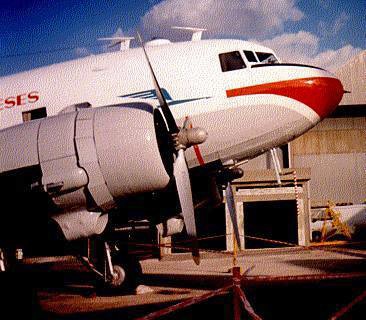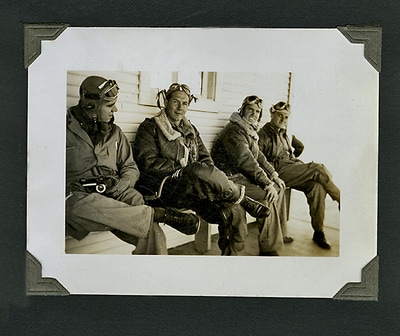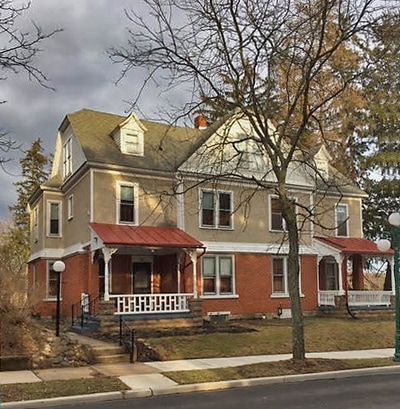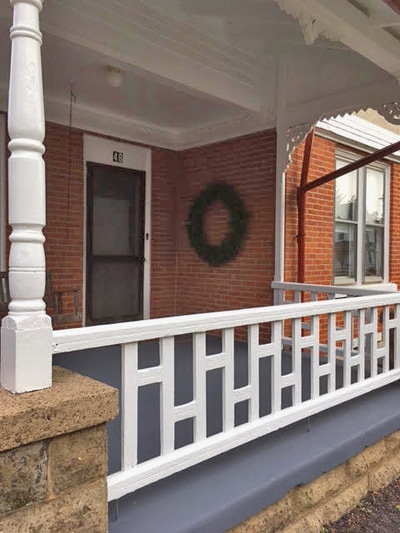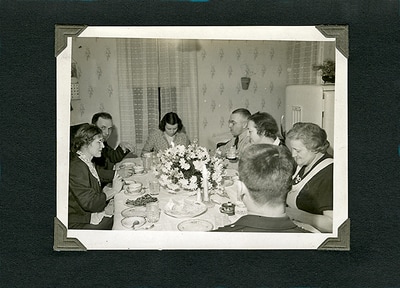Dad’s C-47 (serial number 43-15037) was built in Long Beach CA in 1943. After flight training at Altus AFB in Oklahoma, Lt Kreisher and other Army Air Corps pilots went to Long Beach and flew their planes from there to South America to Africa to England. These were their assigned planes for which they were responsible, and they flew the same ones on missions throughout the war. On D-Day Dad flew from England to France twice towing gliders and also dropping paratroopers in Normandy. He then flew missions across Europe to the Rhine, always in the same plane. After the war my father come home to Pennsylvania, and his plane went into passenger service in Ireland as “St Albert” for Aer Lingus. By 1961 it was in Israel. From 1978-98 it was at TAP Headquarters at the Lisbon Airport. In 2005 it was on display there. Jose at the airport in Lisbon kindly made photographs for us from outside the plane and from the pilot’s seat in the cockpit.
Dad’s C-47 (serial number 43-15037) was built in Long Beach CA in 1943. After flight training at Altus AFB in Oklahoma, Lt Kreisher and other Army Air Corps pilots went to Long Beach and flew their planes from there to South America to Africa to England. These were their assigned planes for which they were responsible, and they flew the same ones on missions throughout the war. On D-Day Dad flew from England to France twice towing gliders and also dropping paratroopers in Normandy. He then flew missions across Europe to the Rhine, always in the same plane. After the war my father come home to Pennsylvania, and his plane went into passenger service in Ireland as “St Albert” for Aer Lingus. By 1961 it was in Israel. From 1978-98 it was at TAP Headquarters at the Lisbon Airport. In 2005 it was on display there. Jose at the airport in Lisbon kindly made photographs for us from outside the plane and from the pilot’s seat in the cockpit.
In my parents’ generation all the young men in my family were soldiers. During World War II my father piloted a C-47 troop carrier in the Normandy Invasion and made two trips from England. His brother was a radio operator on a small island in the Pacific. My mother’s two brothers were also at Normandy in different capacities, and the two families (who were neighbors in rural central Pennsylvania throughout their lives) waited for sons and brothers and husbands to send infrequent letters and finally, after years away, to come home safely.
In 1984, I discovered a trunk of photographs he had made and collected during the war, and then shortly after returning home, he apparently put them away and simply shut the lid.
From the images, artefacts, and memories, I will create an installation space where the viewer/participant experiences the tension of waiting for loved ones at war and not knowing, the way my four grandparents and mother felt while the four young men were away in WWII, their whereabouts and activities unknown. Within the space I will reference the long trajectory that this war experience had on following generations after the men returned as troubled veterans and tried to take up their lives again.
